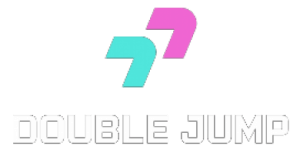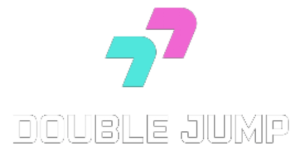In this article, we’ll provide an overview of Kickstarter and explore the pros and cons of using the platform to launch your business.
Pros of using Kickstarter:
- Easy to use platform
- Global network of backers
- Can help bring ideas to life
Cons of using Kickstarter:
- No guarantee of success
- Time-consuming process
- No guarantee of funds
Kickstarter encourages users to establish goals for their product or service launches and ask backers to pledge money toward achieving those targets. The rewards offered as an incentive are personalized and tailored to the project’s needs, while also allowing backers to contribute as much or as little as they want — usually in exchange for early access or discounts on the final product.
Once the campaign ends, the creator will deliver on their promises by fulfilling the perks previously pledged, carrying out the project according to their guidelines and keeping backers informed on updates along the way.
Anyone can create a crowdfunding project on Kickstarter by signing up through an email address or Facebook account before following a series of steps:
- Preparing a launch plan
- Collecting funds after completion
How does Kickstarter work?
Kickstarter is a crowdfunding platform that helps creators bring their projects to life. It provides an online space where individuals and teams can launch projects in a wide variety of categories, including art, technology, film, literature, fashion, food, comics and games.
The way it works is simple: A project creator posts information about their project on Kickstarter such as what it is and why it’s important. Then other people – ‘backers’ – review the project and pledge money to support it. If the creator meets the financial goal they set for themselves within a set time period (usually 30-60 days), then all backers’ money gets put towards making the project come to life.
If the goal isn’t met in that time frame, then no one is charged anything. Once funds are collected from backers at end of funding period they are sent directly to the creator’s account so they can start work on their project right away Linking projects with backers on Kickstarter gives creators the opportunity to reach people around the world who care about similar things and turn ideas into realities.
Pros and Cons of Kickstarter
Kickstarter can be a great way to get a business off the ground. It allows entrepreneurs to connect with backers to fund their projects, have access to funds quickly and easily, and gain valuable exposure. However, there are some pros and cons to consider when starting a business through Kickstarter.
Let’s discuss them in more detail.
- Pros
- Cons
Pros of using Kickstarter
Using Kickstarter to raise funds for your project comes with a variety of benefits. It is a great way to get publicity and extend the reach of your project as well as gain valuable feedback from potential supporters. The crowdfunding platform also offers a straightforward set of rules and guidelines that make it easy to understand the process from start to finish.
Not only does Kickstarter offer an organized system for handling money, but it also allows the creator to set specific goals for the amount of money desired and how the funds will be used to support the project. This provides insight into the progress being made, which can be inspiring for both backers and supporters alike. Additionally, it helps backers feel involved in their projects and projects backed by their friends due to its tracking feature.
Additionally, Kickstarter is also quick when it comes to getting funds, which makes it a great idea if you are in a rush or have limited time constraints. This can be helpful when dealing with different funding options that may take longer than expected or need more paperwork than necessary.
Furthermore, because all projects must have some kind of reward system, creators have an incentive method already established which can help increase their chances of success when trying to fund their project or idea.
Cons of using Kickstarter
Kickstarter is a platform popularly used by entrepreneurs and creators to raise money for their projects. Despite the many advantages that Kickstarter offers, there are still a few drawbacks one should consider before taking this route to fund the startup.
Firstly, when using Kickstarter for start-up campaigns, it is important to be aware of its “all-or-nothing” funding model. This means that projects will either meet their fundraising goal and receive their funds accordingly, or if they do not, money pledged to the project through Kickstarter will not be executed by donors.
Secondly, as a crowdfunding platform based mainly on donations from the public instead of investors or loan money from institutions, control remains in hand for large investments – an issue small start-ups may face without other types of funding available.
Additionally, when using this platform one must adhere to various regulations and guidelines set forth by Kickstarter itself which could become a source of frustration. One rule disallowed is offering equity in the project as some countries have laws forbidding such practices – which could significantly limit fundraising techniques used among backers of the project.
Furthermore, there are repeated fees collected on any pledges made which cuts into total funds available after meeting a goal and makes it difficult for creators on a budget who rely on this service as an initial capital source.
Finally, since supports rely heavily on promotion through networks outside of Kickstarter itself in order to get enough traction to actually reach goals they have set out to attain; some campaigns may be crippled if proper advertising techniques are not adequately implemented throughout the process thus forfeiting all pledges made within time frames that have been prearranged ahead of time through ties with those networks previously established during planning stages if marketed effectively.
Tips for a successful Kickstarter campaign
Kickstarter can be a great way to get your business off the ground and start making money quickly. With the right strategy and planning, a successful Kickstarter campaign can ensure you get the funds you need to launch your business.
In this section, we provide tips for running a successful Kickstarter campaign, with advice on how to increase chances of your campaign succeeding.
- Create a compelling story for your campaign.
- Choose the right reward tiers.
- Create a promotional plan.
- Create a network of supporters.
- Start promoting your campaign early.
- Engage your backers.
- Stay organized.
Create a detailed campaign
Creating a detailed and informative campaign is essential if you want to be successful with a Kickstarter project. To begin your campaign, you’ll need to clearly explain who the target audience is and why they would care about the product or service being offered. You’ll also need to articulate a clear goal for the project, as well as an outline of your intended plans for achieving it.
- Your campaign should include core information about
- What you’re raising funds for
- How much money you are planning on raising
- What percentage of that goal is needed in order to make the project a reality
Additionally, potential backers will want to know when they can expect to receive rewards or other incentives that they purchase with their contribution; setting expectations up front will help ensure backers know exactly what they’re getting and when.
A detailed campaign also provides interested parties with a sense of trust and assurance that their monetary contributions are going towards an effort that has been thoughtfully planned out from start to finish.
Set realistic goals
When setting goals for your Kickstarter campaign, it’s important to take several factors into consideration: the amount of money you will need to get your project off the ground, the size and diversity of your audience, and the number of people who will be willing to pledge money. It’s also important to take into account that most successful Kickstarter campaigns tend to be fully funded in under a month, so consider setting a funding window that’s more manageable.
Before you launch your campaign, set yourself realistic goals by doing research on what similar campaigns have achieved. Make sure to factor in Kickstarter’s fees — up to 5% on funded projects — and double-check potential pledge levels and reward ranges to make sure they are achievable. Additionally, think through the different actions you need people to take throughout your campaign; for example budgeting for team members or resources for promoting your project. When making longer-term plans or milestones post-funding, don’t forget about timelines factor future pledges when setting prudent fundraising targets that can ensure these things happen.
- Amount of money needed to get your project off the ground
- Size and diversity of audience
- Number of people willing to pledge money
- Funding window
- Pledge levels and reward ranges
- Budgeting for team members and resources for promoting your project
- Prudent fundraising targets
Utilize social media
Utilizing social media platforms is essential for driving interest to your Kickstarter campaign. Reaching your target audience quickly and effectively will build a strong foundation for the success of your project. Promoting your campaign through Facebook, Twitter, Tumblr, Reddit or other social media platforms can be incredibly helpful in promoting the visibility of your project.
It is important to create informative, visually appealing posts to capture potential backers’ attention. You should take the time to craft effective messages that communicate why you’re doing the project, why they should care and how they should help.
You need to incentivize people enough that they don’t just scroll past without further investigation — include cool rewards and visuals like videos and images to make sure your content stands out. Your goal should be to get people posting, commenting and sharing your content so it reaches as larger audience as possible!
You can also use existing relationships with blogs or websites within related industries for journalism about your project. This provides better chances for more visibility and helps form relationships with potential backers. Rather than forming relationships with one-time strangers from the outside world, turn towards already-forged relationships which can support you before you even start campaigning on Kickstarter itself!
Alternatives to Kickstarter
Kickstarter is a popular crowdfunding platform for launching a business or product. However, it’s not the only option for getting your business off the ground. There are a range of alternatives to Kickstarter, each with their own pros and cons.
In this article we will explore some of the top alternatives to Kickstarter and what they offer:
- Indiegogo
- GoFundMe
- Crowdfunder
- Crowdrise
- Patreon
IndieGoGo
For those seeking a crowdfunding platform alternative to Kickstarter, IndieGoGo can be a great option. Founded in 2008, IndieGoGo is one of the oldest and most recognized crowdfunding sites on the web. The company offers a range of features and flexibility that may better suit certain projects or campaigns than other sites.
IndieGoGo has three models of funding available: all-or-nothing, keep-it-all, and flexible funding— each offering unique benefits to creative entrepreneurs and non-profits.
The all-or-nothing model is best for campaigns with an ambitious goal that must be met in order to succeed. If your projected funds aren’t collected by the deadline, then no money exchanges hands.
With keep-it-all, your campaign gets paid even if it doesn’t reach its goal; however you’ll pay a higher fee if you don’t meet it (10%-13% of funds raised).
Finally flexible funding allows you to collect donations even if your target isn’t met; however you’ll still incur fees (9%-12%).
In addition to its distinctive approach for campaigns compared to other sites, IndieGoGo is also recognized as one of the few sites that service global users without collecting taxes upfront (although the debtor may be responsible for them later). Its simple setup process allows users to create a project page from anywhere in the world—though there are requirements regarding how far an activist can go with regards to promoting their cause. Regardless, these benefits make IndieGoGo a viable option for individuals interested in launching global projects or exploring local grassroots options.
GoFundMe
GoFundMe is an online crowdfunding platform where members can turn their ideas into reality by asking others to financially support their projects. The site serves as a middleman platform that takes security measures to safeguard any donations made. It has an open and flexible funding model, allowing project creators to keep all donations, even if they don’t reach the set target. GoFundMe also provides tools and resources, such as customizable donation forms and personalized donation webpages for project creators to increase their visibility and reach their goals faster.
GoFundMe enables donors to select a wide range of payment methods, including but not limited to credit cards and PayPal transfers.
Howevver, GoFundMe is primary used to raise money for life events such as celebrations and graduations to challenging circumstances like accidents and illnesses.
Crowdfunder
Crowdfunder is an online platform that connects entrepreneurs and startups to potential investors, providing the opportunity to fund startups in exchange for equity and rewards. Companies get funding with the help of Crowdfunder investors by creating a profile on Crowdfunder, posting their project or idea, and offering potential investors a piece of the company or reward in exchange for their investment.
Crowdfunder offers entrepreneurs several advantages over Kickstarter. One of these advantages is the ability to offer equity to investors instead of rewards. This makes it easier for companies to get growth capital from experienced investors who can provide advice and resources in addition to capital.
Furthermore, Crowdfunder does not require projects to be fully funded before investments are made; instead, companies can take capital based on milestones achieved along the way or even negotiate different terms depending on investor appetite.
Additionally, Crowdfunder requires significantly less paperwork than crowdfunding platforms such as Kickstarter, simplifying the fundraising process while still protecting the interests of both companies and investors.
- Offers equity options to investors
- Does not require projects to be fully funded before investments are made
- Requires significantly less paperwork than other crowdfunding platforms
Overall, Crowdfunder is an effective alternative method for small businesses to raise money without having to rely solely on traditional methods such as loans or venture capital funds. By offering rewards or equity options, startup companies can access financing that better fits their needs while also gaining access to valuable mentorships and resources through a larger network of backers and supporters.
Conclusion
Kickstarter can be a great way to get your project off the ground and put it in front of potential customers. By using Kickstarter, you can test out your idea, get feedback, and improve it along the way. Ultimately, you can decide if it is a viable business model for you or not.
In this article, we will be looking at the pros and cons of Kickstarter and drawing a conclusion on whether or not it is a good way to start a business.
Pros:
- Low startup costs
- Quick launch time
- Exposure to potential customers
- Ability to test out ideas
Cons:
- Competition
- Limited time frame
- No guarantee of success
Final thoughts on using Kickstarter to start a business
Kickstarter can indeed be a great way to quickly launch a business idea, but be aware that it is not without risks and limitations.
On one hand, having access to significant capital upfront provides the opportunity to pursue ideas that could otherwise not be pursued.
On the other hand, there is no guarantee of success—projects may fail, as well as requiring additional funds to reach full capacity.
Overall, using Kickstarter for business purposes has its advantages and disadvantages. When properly used following all mandated guidelines and protocols, there is potential for success with this type of crowd-funding platform.
It is important to understand that no investment opportunity should be taken lightly and research must be performed before making any decision. Additionally, entrepreneurs should know their goals and visions regarding their businesses in order to have a better chance at attaining desired outcomes with Kickstarter projects.
Contact Us
Fill out the form below and we will be in touch shortly! Looking for employment or contract opportunities? Use this FORM instead.
follow us on instagram @DOUBLEJUMPMEDIA



